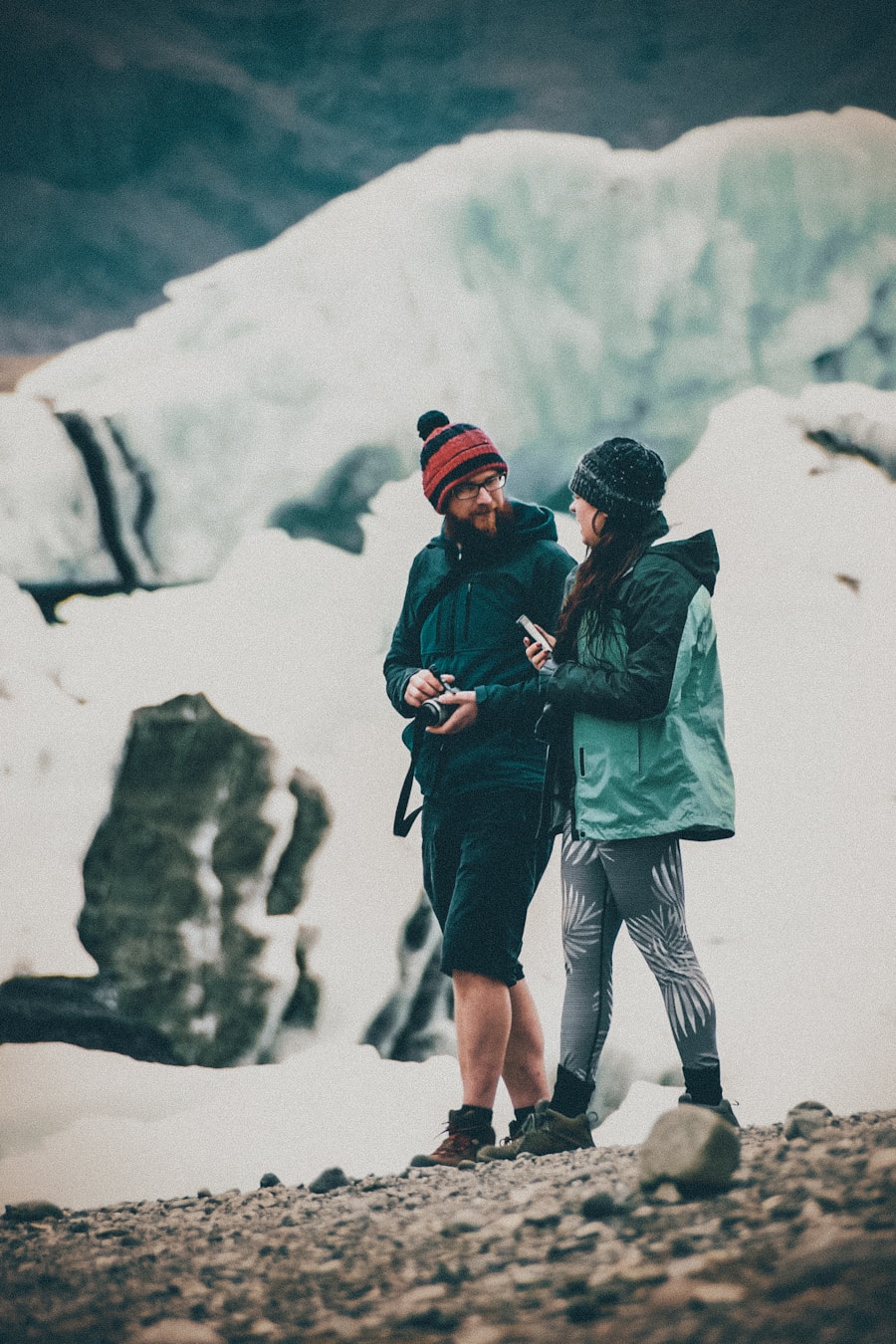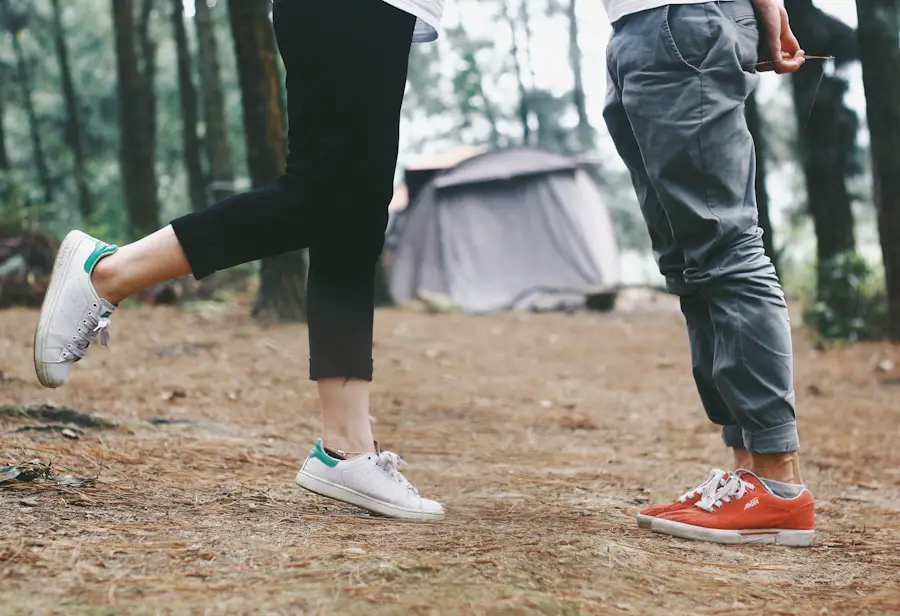Selecting the appropriate footwear is one of the most critical decisions a hiker can make. The right shoes or boots can significantly enhance comfort, support, and overall hiking experience. When choosing footwear, it is essential to consider the type of terrain you will encounter.
For instance, if your hike involves rocky paths or steep inclines, a sturdy pair of hiking boots with good ankle support is advisable. These boots often feature rugged soles designed to provide traction on uneven surfaces, reducing the risk of slips and falls. Brands like Merrell and Salomon offer a variety of options that cater to different hiking conditions, ensuring that your feet remain protected and comfortable throughout your journey.
In addition to terrain considerations, the fit of the footwear is paramount. Ill-fitting shoes can lead to blisters, calluses, and other foot ailments that can ruin a hiking trip. It is recommended to try on hiking boots with the socks you plan to wear during your hike, as this can affect the fit.
A good rule of thumb is to ensure there is enough room in the toe box for your toes to wiggle while still providing a snug fit around the heel to prevent slippage. Furthermore, investing in moisture-wicking socks can enhance comfort by keeping your feet dry and reducing friction. Ultimately, the right footwear not only protects your feet but also contributes to your overall enjoyment of the great outdoors.
Key Takeaways
- Choose footwear with good ankle support and traction for hiking
- Dress in layers and bring a waterproof jacket for unpredictable weather
- Select moisture-wicking and breathable clothing for comfort
- Pack a hat, sunglasses, and sunscreen for sun protection
- Consider the terrain and choose appropriate footwear and clothing
- Dress in bright colors and bring a whistle for safety
- Incorporate personal style with colorful accessories and patterns
- Pack a change of clothes and comfortable shoes for after the hike
Dressing for the Weather
Weather conditions can change rapidly in outdoor environments, making it crucial for hikers to dress appropriately for the forecast. Layering is a fundamental strategy that allows hikers to adapt to varying temperatures and conditions throughout their trek. The base layer should be made of moisture-wicking materials that draw sweat away from the skin, keeping you dry and comfortable.
Fabrics such as merino wool or synthetic blends are excellent choices for this layer, as they provide insulation while remaining breathable. The middle layer serves as insulation and should be chosen based on the expected temperature. Fleece jackets or down vests are popular options that provide warmth without adding excessive bulk.
Finally, an outer layer is essential for protection against wind and rain. Waterproof and breathable jackets made from materials like Gore-Tex are ideal for keeping you dry while allowing moisture from sweat to escape. By dressing in layers, hikers can easily adjust their clothing as conditions change, ensuring they remain comfortable regardless of whether they encounter sun, rain, or chilly winds.
Selecting Comfortable and Functional Clothing

When it comes to hiking attire, comfort and functionality should be at the forefront of your choices. Opting for clothing made from synthetic or merino wool fabrics can significantly enhance your experience on the trail. These materials are designed to wick moisture away from the body, which is particularly important during strenuous hikes where perspiration is inevitable.
Additionally, they offer quick-drying properties that can be a lifesaver if you encounter unexpected rain or stream crossings. Beyond fabric choice, the fit of your clothing plays a vital role in comfort. Loose-fitting garments allow for a greater range of motion and help prevent chafing during long hikes.
However, overly baggy clothing can snag on branches or rocks, so finding a balance is key. Many outdoor brands offer clothing specifically designed for hiking that incorporates features such as stretch panels and articulated joints to enhance mobility. Pockets are another functional aspect to consider; having easy access to snacks, maps, or other essentials can make your hike more enjoyable and efficient.
Packing the Right Accessories
| Accessory Type | Number Packed | Weight (lbs) |
|---|---|---|
| Socks | 5 pairs | 0.5 lbs |
| Belts | 2 | 0.3 lbs |
| Scarves | 3 | 0.7 lbs |
| Hats | 1 | 0.4 lbs |
Accessories can make a significant difference in both comfort and safety while hiking. A well-chosen hat can protect you from sun exposure or keep you warm in cooler temperatures. Wide-brimmed hats are excellent for sunny days as they provide shade for your face and neck, while beanies or headbands are ideal for retaining heat during colder hikes.
Sunglasses with UV protection are also essential; they shield your eyes from harmful rays and reduce glare, especially when hiking near water or in snowy conditions. Another important accessory is a good-quality backpack that fits comfortably and distributes weight evenly across your body. Look for backpacks with padded shoulder straps and a hip belt to help alleviate pressure on your back during long treks.
Hydration systems or water bottles are also crucial; staying hydrated is vital for maintaining energy levels and preventing fatigue. Many backpacks come with built-in hydration reservoirs, allowing for easy access to water without having to stop frequently. Additionally, packing a first-aid kit with essentials like band-aids, antiseptic wipes, and blister treatment can prepare you for minor injuries that may occur on the trail.
Considering the Terrain
Understanding the terrain you will be hiking on is essential for making informed decisions about your gear and clothing choices. Different landscapes present unique challenges that require specific preparations. For example, if you plan to hike in mountainous regions with steep ascents and descents, investing in trekking poles can provide additional stability and reduce strain on your knees.
These poles help distribute weight more evenly and can be particularly beneficial during long hikes where fatigue sets in. In contrast, if your hike takes you through wetlands or muddy areas, waterproof footwear becomes crucial. Shoes with good drainage capabilities will help keep your feet dry while allowing water to escape if you step into puddles or streams.
Additionally, understanding the flora and fauna of the area can inform your clothing choices; wearing long pants can protect against thorny bushes or insect bites in certain regions. By considering the terrain ahead of time, you can tailor your gear and clothing to ensure a safer and more enjoyable hiking experience.
Dressing for Safety

Safety should always be a top priority when preparing for a hike, and this extends beyond just choosing sturdy footwear or appropriate clothing. Wearing bright colors or reflective materials can enhance visibility, especially in wooded areas where it may be easy to blend into the surroundings. This is particularly important if you plan to hike in areas frequented by hunters or during low-light conditions such as early morning or late afternoon.
In addition to visibility, it’s wise to dress in layers that allow for quick adjustments based on changing weather conditions or physical exertion levels. For instance, if you start feeling too warm during a climb, being able to remove a layer quickly can help regulate your body temperature and prevent overheating. Furthermore, incorporating safety gear such as a whistle or a personal locator beacon into your pack can provide peace of mind in case of emergencies.
These small but significant items can make a difference in ensuring that you remain safe while enjoying nature.
Incorporating Personal Style
While functionality and safety are paramount when dressing for a hike, there’s no reason why personal style should take a backseat. Many outdoor brands now offer stylish options that don’t compromise on performance. Choosing colors and patterns that reflect your personality can make your hiking experience more enjoyable and boost your confidence on the trail.
For example, vibrant colors not only stand out but also add an element of fun to your outdoor adventures. Accessorizing with items like colorful bandanas or unique hats can also express individuality while serving practical purposes such as sun protection or sweat absorption. Additionally, many hikers enjoy customizing their gear with patches or pins that reflect their experiences or favorite trails.
This personal touch not only makes your gear unique but also serves as a conversation starter with fellow hikers who may share similar interests.
Dressing for After the Hike
After completing a hike, transitioning into comfortable clothing is essential for relaxation and recovery. Many hikers prefer to have a change of clothes readily available in their vehicle or backpack for this purpose. Soft cotton t-shirts or breathable athletic wear are excellent choices for post-hike attire as they allow the skin to breathe after being confined in moisture-wicking layers during the trek.
Footwear is another consideration; swapping out hiking boots for comfortable sandals or slip-on shoes can provide relief after hours spent on rugged terrain. Additionally, bringing along a light jacket or hoodie can be beneficial if temperatures drop after sunset or if you find yourself sitting around a campfire post-hike. Taking care of your body after exertion is just as important as preparation before hitting the trail; proper clothing choices contribute significantly to recovery and overall enjoyment of the outdoor experience.
If you’re planning a hiking date, it’s important to dress appropriately for the occasion. You’ll want to wear comfortable and breathable clothing that allows for easy movement. Consider checking out this article on the best hiking backpack for multi-day trek to ensure you have all the essentials packed and ready to go. Having the right gear can make your hiking date even more enjoyable and stress-free.
Love travel? Join Our Facebook Community For More Tips.
FAQs
What should I wear on a hiking date?
When going on a hiking date, it’s important to wear comfortable and weather-appropriate clothing. This includes moisture-wicking and breathable fabrics, such as synthetic materials or merino wool, to help keep you dry and comfortable during the hike.
What type of footwear is best for a hiking date?
For a hiking date, it’s important to wear sturdy and supportive hiking boots or trail shoes. These will provide the necessary traction and support for navigating various terrains and trails.
Should I bring any specific accessories for a hiking date?
It’s a good idea to bring a backpack to carry essentials such as water, snacks, sunscreen, and a first aid kit. Additionally, consider bringing a hat, sunglasses, and a lightweight rain jacket in case of changing weather conditions.
What should I avoid wearing on a hiking date?
Avoid wearing cotton clothing, as it retains moisture and can lead to discomfort and chafing during the hike. It’s also best to avoid wearing open-toed shoes or sandals, as they do not provide adequate protection and support for hiking.
How can I stay comfortable and stylish on a hiking date?
To stay comfortable and stylish on a hiking date, opt for clothing that is both functional and fashionable. Look for hiking apparel in flattering cuts and colors, and consider layering to adjust to changing temperatures throughout the hike.
